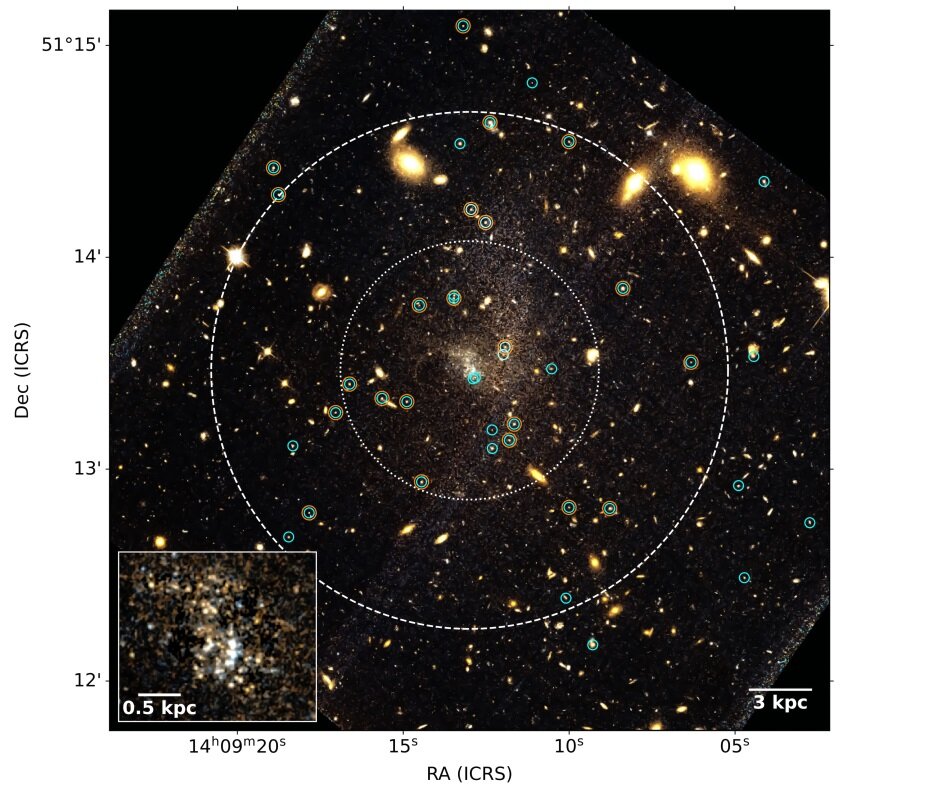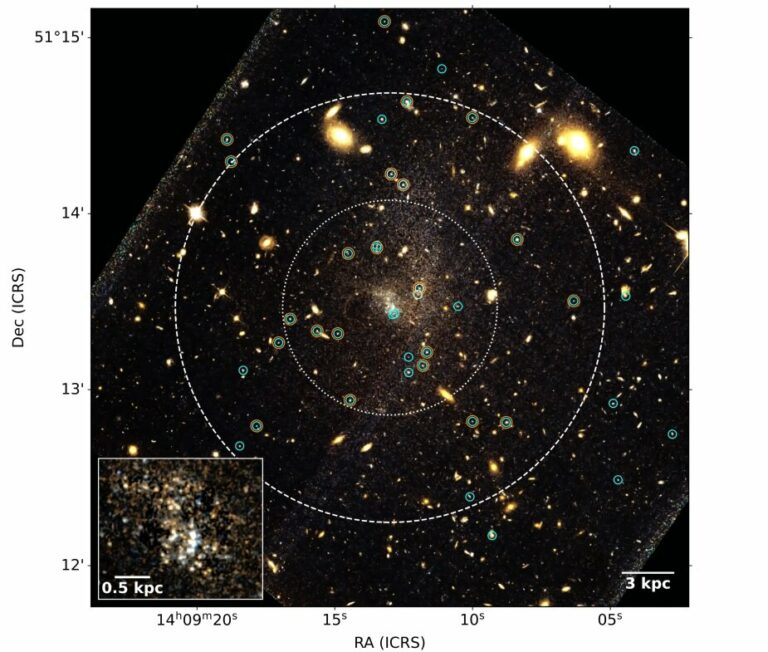In-Depth Investigation of the Characteristics of the Ultra-Diffuse Galaxy UGC 9050-Dw1 by Astronomers
Astronomers have examined a galaxy called UGC 9050-Dw1, which belongs to the category of ultra-diffuse galaxies (UDGs). By utilizing the Hubble Space Telescope (HST) and Jansky Very Large Array (VLA), the researchers gained valuable insights into the characteristics of this galaxy. The study, published on June 9 in the arXiv pre-print server, sheds light on the nature of UDGs and their ability to withstand the gravitational forces of their host clusters.
UDGs are galaxies with remarkably low density. Despite their size being comparable to that of the Milky Way, they contain merely 1% of the stars found in our own galaxy. The puzzle of UDGs continues to confound scientists as they strive to explain why these faint yet sizable galaxies remain intact within the tidal field of their host clusters.

Located approximately 115 million light years away, UGC 9050-Dw1 is one such UDG associated with the spiral galaxy UGC 9050. It displays a noticeable tail-like structure, and its central region exhibits an unusual morphology suggestive of an interaction. Additionally, this UDG demonstrates indications of recent star formation activity.
To investigate these peculiarities, a team of astronomers led by Catherine Fielder from the University of Arizona in Tucson conducted observations of UGC 9050-Dw1 using the HST and VLA.
“In our study, we examine the ultra-diffuse galaxy UGC 9050-Dw1, which was chosen due to its disrupted morphology, as part of a larger sample of UDGs displaying evidence of significant interactions,” wrote the researchers in their paper.
The observations unveiled that UGC 9050-Dw1 possesses an elongated central core emitting ultraviolet light, accompanied by neutral atomic hydrogen (H I) gas and an extended stellar tidal plume in the northern region. According to the astronomers, this morphology implies that UGC 9050-Dw1 is currently in the process of transforming into a UDG.
The results indicate that UGC 9050-Dw1 is an H I-bearing UDG, exhibiting bright near-ultraviolet emissions indicative of recent star formation in its central region. It was revealed that any interactions have not suppressed the system, or if they have, it must have occurred very recently—within a span of less than 100 million years. The star-formation rate of UGC 9050-Dw1 was estimated to be approximately 0.00514 solar masses per year.
Furthermore, the astronomers identified 52 globular clusters (GCs) within UGC 9050-Dw1, with a specific frequency of 122 and a GC luminosity fraction of 21%. These GCs displayed a centrally concentrated radial distribution and were estimated to be at least 1.5 billion years old. The GC colors were uniform and skewed towards the blue end of the color distribution, indicating a potential period of intense star formation during the formation of the majority of globular clusters in UGC 9050-Dw1.
In conclusion, the acquired data suggests that UGC 9050-Dw1 originated from a rare event involving the merger of two dwarf galaxies.
“Our study proposes that UGC 9050-Dw1 formed through a unique merger between two dwarf galaxies, wherein intense, clumpy star formation led to its present observed properties. While such events are infrequent, dwarf mergers may offer a pathway to the formation of UDGs rich in globular clusters, characterized by a relatively uniform population,” concluded the authors of the study.
Do not forget to share your opinion with us to provide you with the best posts !




0 Comments